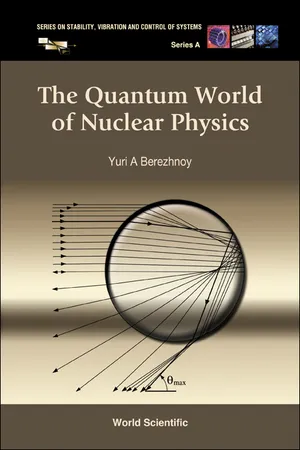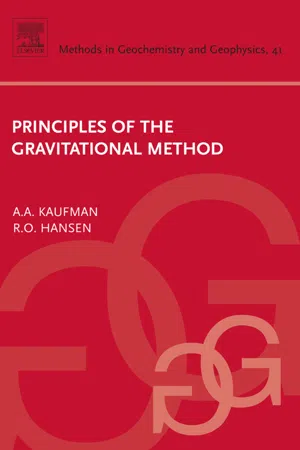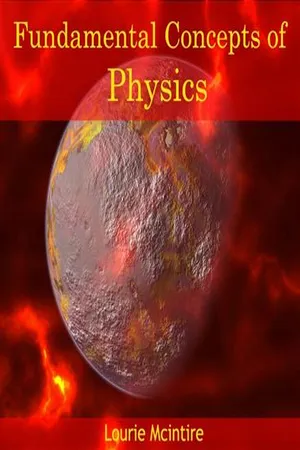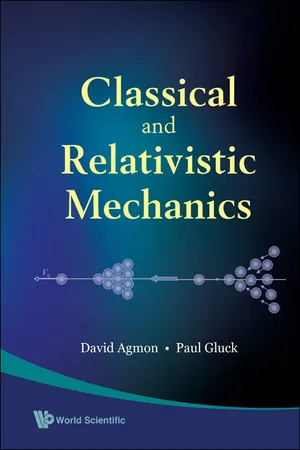Physics
Attraction and Repulsion
Attraction and repulsion are fundamental forces in physics that describe the interaction between objects. Attraction refers to the force that pulls objects together, such as gravity or the electromagnetic force between opposite charges. Repulsion, on the other hand, describes the force that pushes objects apart, like the electromagnetic force between like charges. These forces play a crucial role in understanding the behavior of particles and objects in the universe.
Written by Perlego with AI-assistance
Related key terms
1 of 5
7 Key excerpts on "Attraction and Repulsion"
- eBook - ePub
- William Walker Atkinson(Author)
- 2013(Publication Date)
- Perlego(Publisher)
In view of our belief that this "attraction" is a form of mental effort, let us regard the term "Attraction" as being a form of what we call "Desire," or even "Love," in the mental world. If you will think of it in this way, you will be better able to fall in with our lines of thought.And, in addition to every particle of Substance having an attraction (love or desire) for every other particle, it has the means and power to draw that other particle toward itself, and to move toward that other particle at the same time. Webster gives a very clear idea of this when he defines Attraction as: "An invisible power in a body by which it draws anything to itself; the power in nature acting mutually between bodies, or ultimate particles, tending to draw them together, or to produce their cohesion or combination, and conversely resisting separation."The majority of persons, when thinking of "Gravitation," are satisfied with the idea that it is a power that "pulls things down to the ground," and do not think of it as a force that "pulls things" other ways besides "down," and which is possessed and exercised by the speck of dust as well as by the whole earth—by the molecule as well as by the mass. The reason of this is that this power is so slight in small bodies of Substance that it is unnoticed; and that only when the mass is sufficiently large to make the "pull" strong does one perceive and appreciate that the force exists. The lack of information on the part of the average person regarding this subject is amazing, particularly when the importance of the knowledge is understood.The attraction that holds the molecules of Substance together is Gravitation. The attraction that "pulls" a piece of Substance to the earth is Gravitation. The attraction that keeps the suns and planets in their orbits is Gravitation. Let us see the operations of the Law.In Astronomy you may learn that the movements of the planets around the sun and the moons around their planets—their regular and constant relative positions—are caused by the force of Gravitation. If it were not for this attraction by the Sun, the planets would fly out into space, like a stone from a sling. The Attraction of Gravitation acts on the planets just as does the string of the whirling sling that keeps the stone from flying away during the whirling until the string is released. Some astronomers think that our sun revolves around some greater sun, and this again around a greater, and so on to infinity. If this be so, then the Attraction of Gravitation is that which holds them all in their orbits and places in spite of their motion. - eBook - PDF
- Yuri A Berezhnoy(Author)
- 2005(Publication Date)
- WSPC(Publisher)
Chapter 2 Fundamental Interactions 2.1 Gravitational Interaction Physics is concerned with matter: its structure and motion. The motion of matter is due to certain forces acting between bodies. The motion of galaxies and stars, of planets and comets, of electrons in TV sets and atoms, of nucleons and quarks in atomic nuclei, radioactive decays of atomic nuclei and elementary particles as well as all various processes in the Universe are caused by interactions between different physical objects. So it is not surprising that some of the most important questions in physics pertain to the study of these interactions. Over two millennia ago, the Greek philosopher Aristotle theorized that all substance in the Universe consisted of four elements — earth, air, fire, and water — and that these were subject to the action of two forces. The first was the force of gravity, which attracted earth and water downwards. The second was a force of lightness, which served to attract fire and air upwards. Thus, Aristotle divided all of Nature into substances and forces. This approach has persisted in physics until the present day. Now, there are four known types of interactions: gravitational, electromagnetic, and the strong and weak nuclear forces. Let us consider each in turn. The gravitational interaction, by intensity, is the weakest of all the in-teractions known to us. The gravitational forces have a universal character. This means that all matter is subject to them; this is what the law of univer-sal gravitation states. The range of gravitational forces is infinite. Gravita-tional forces are attractive. Gravitational interaction is mainly manifested between macroscopic bodies; it determines the motions of various cosmic objects: galaxies, stars, planets, etc. In the world of elementary particles, gravitational interaction is not directly apparent because of the very small 41 42 The Quantum World of Nuclear Physics masses of the particles. - eBook - PDF
- Alex Kaufman, Richard O. Hansen, Alex A. Kaufman(Authors)
- 2007(Publication Date)
- Elsevier Science(Publisher)
Chapter 1 Principles of Theory of Attraction 1.1. NEWTON’S LAW OF ATTRACTION The phenomenon of attraction of masses is one of the most amazing features of nature, and it plays a fundamental role in the gravitational method. Everything that we are going to derive is based on the fact that each body attracts other. Clearly this indicates that a body generates a force, and this attraction is observed for extremely small particles, as well as very large ones, like planets. It is a universal phenomenon. At the same time, the Newtonian theory of attraction does not attempt to explain the mechanism of transmission of a force from one body to another. In the 17th century Newton discovered this phenomenon, and, moreover, he was able to describe the role of masses and distance between them that allows us to calculate the force of interaction of two particles. To formulate this law of attraction we suppose that particles occupy elementary volumes D V ( q ) and D V ( p ), and their position is characterized by points q and p , respectively, see Fig. 1.1a . It is important to emphasize that dimensions of these volumes are much smaller than the distance L qp between points q and p . This is the most essential feature of elementary volumes or particles, and it explains why the points q and p can be chosen anywhere inside these bodies. Then, in accordance with Newton’s law of attraction the particle around point q acts on the particle around point p with the force d F ( p ) equal to d F ð p Þ ¼ k D m ð q Þ D m ð p Þ L 3 qp L qp ð 1 : 1 Þ where k is a coefficient of proportionality, called the gravitational constant. In the International System of Units (SI) its value is k ¼ 6 : 674 10 11 m 3 = kg s 2 D m ( q ) and D m ( p ) are masses which may have arbitrary values, and they are meas-ured in kilograms. - eBook - ePub
- Britannica Educational Publishing, Erik Gregersen(Authors)
- 2010(Publication Date)
- Britannica Educational Publishing(Publisher)
According to Coulomb’s law, the force F between one charge, q 1, and a second charge, q 2, is proportional to the product of the charges divided by the square of the distance r between them, or F = kq 1 q 2 / r 2. Here k is the proportionality constant, equal to ¼ πε 0 (ε 0 being the permittivity of free space). An electrostatic force can be either attractive or repulsive, because the source of the force, electric charge, exists in opposite forms: positive and negative. The force between opposite charges is attractive, whereas bodies with the same kind of charge experience a repulsive force. Coulomb also showed that the force between magnetized bodies varies inversely as the square of the distance between them. Again, the force can be attractive (opposite poles) or repulsive (like poles). Magnetism and electricity are not separate phenomena. They are the related manifestations of an underlying electromagnetic force. Experiments in the early 19th century by, among others, Hans Ørsted (in Denmark), André-Marie Ampère (in France), and Michael Faraday (in England) revealed the intimate connection between electricity and magnetism and the way the one can give rise to the other. The results of these experiments were synthesized in the 1850s by the Scottish physicist James Clerk Maxwell in his electromagnetic theory. Maxwell’s theory predicted the existence of electromagnetic waves—undulations in intertwined electric and magnetic fields, traveling with the velocity of light. Max Planck’s work in Germany at the turn of the 20th century, in which he explained the spectrum of radiation from a perfect emitter (blackbody radiation), led to the concept of quantization and photons. In the quantum picture, electromagnetic radiation has a dual nature, existing both as Maxwell’s waves and as streams of photons. The quantum nature of electromagnetic radiation is encapsulated in quantum electrodynamics, the quantum field theory of the electromagnetic force - No longer available |Learn more
- (Author)
- 2014(Publication Date)
- Learning Press(Publisher)
The strong and weak forces act only at very short distances, and are responsible for the interactions between subatomic particles including nucleons and compound nuclei. The elec-tromagnetic force acts between electric charges and the gravitational force acts between masses. All other forces are based on the existence of the four fundamental interactions. For example, friction is a manifestation of the electromagnetic force acting between the atoms of two surfaces, and the Pauli Exclusion Principle, which does not allow atoms to pass through each other. The forces in springs, modeled by Hooke's law, are also the result of electromagnetic forces and the Exclusion Principle acting together to return the object to its equilibrium position. Centrifugal forces are acceleration forces which arise simply from the acceleration of rotating frames of reference. The development of fundamental theories for forces proceeded along the lines of unification of disparate ideas. For example, Isaac Newton unified the force responsible ________________________ WORLD TECHNOLOGIES ________________________ for objects falling at the surface of the Earth with the force responsible for the orbits of celestial mechanics in his universal theory of gravitation. Michael Faraday and James Clerk Maxwell demonstrated that electric and magnetic forces were unified through one consistent theory of electromagnetism. In the twentieth century, the development of quantum mechanics led to a modern understanding that the first three fundamental forces (all except gravity) are manifestations of matter (fermions) interacting by exchanging virtual particles called gauge bosons. This standard model of particle physics posits a similarity between the forces and led scientists to predict the unification of the weak and electromagnetic forces in electroweak theory subsequently confirmed by observation. - eBook - PDF
- R.D. Nelson(Author)
- 2012(Publication Date)
- Elsevier Science(Publisher)
39 Chapter 3 PARTICLE PHYSICS What forces cause agglomeration or repulsion of particles? How are they influenced by the surrounding liquid and solutes? How do sur-face reactions and adsorbed species modify the forces? This chapter provides an introductory discussion at the particle-particle interaction level, as though we were similar in size to a water molecule and could walk on the surface of a particle or swim through the liquid surround-ing it to observe the surrounding ions, measure the forces, and sense the electric potentials. A good dispersion has repulsive forces between particles to prevent ag-glomeration. The first section below describes the types and origin of the forces between particles and outlines the theories that explain how they vary with system conditions. One good way to evaluate particle characteristics and thus to predict how particles will interact with each other is to observe how particles respond to externally imposed force fields, so the second section below describes this aspect of particulate behavior. Most of the equations in this chapter are derived in intro-ductory texts on physical chemistry; sources for the less common ones are cited. T w o -b o d y Interactions 3.1 In this section the interactions are expressed in terms of potential en-ergy, u [J] as a function of distance x [m], because this is the conven-tional way to discuss pair interactions. Advanced texts use statistical mechanics to relate the collective effects of particle interaction energies to the thermodynamic parameters for the system. In the next section the response of a particle to external fields is expressed in terms of force / [N]. Since / = du/dx, the slope of a plot of u against x gives / as a function of x. A positive slope indicates an attraction force, a negative slope indicates a repulsion force, and a maximum or minimum in the energy plot indicates a separation at which the force of attraction (or repulsion) is zero. - eBook - PDF
- David Agmon, Paul Gluck;;;(Authors)
- 2009(Publication Date)
- WSPC(Publisher)
Chapter 10 Gravitation and Central Force Problems 349 depends on the system of units. Its small value indicates that the gravitational interaction is rather weak, as compared with say the electromagnetic interaction. The electrical repulsive force between two electrons is some 10 42 times larger than their mutual gravitational force, both calculated at the same distance. As an example, let us take m x - m 2 = 1000 kg and r = 1 m. Substituting, we find F 12 (r) = F 21 (r) = Gm 1 m 2 /r 2 =6.673-10 11 100100/l 2 =6.67310~ 7 TV. This is very small indeed, requiring extremely sensitive apparatus to detect. So for ordinary objects around us the gravitational attraction does not manifest itself. It comes into its own only for massive, celestial bodies. It is important to note that the law as formulated above for point masses is also valid for extended objects with a spherically symmetric mass distribution that depends only on the radius r. Newton was forced to invent the calculus to prove this, so that he could apply his force law to (the nearly spherically symmetric) members of the solar system. Gravity is a volume force, acting as it does on every part of a body. In a uniform gravitational field all the parts have the identical acceleration g (this has been shown experimentally to be accurate to Ag/g
Index pages curate the most relevant extracts from our library of academic textbooks. They’ve been created using an in-house natural language model (NLM), each adding context and meaning to key research topics.






